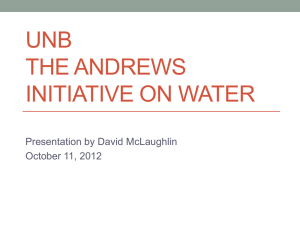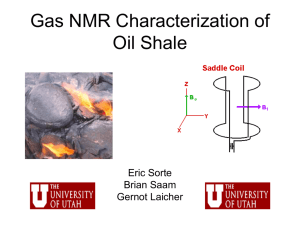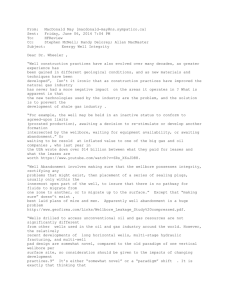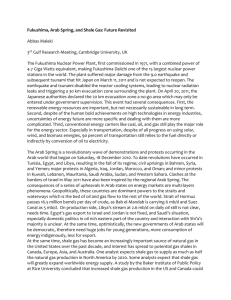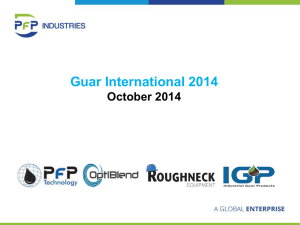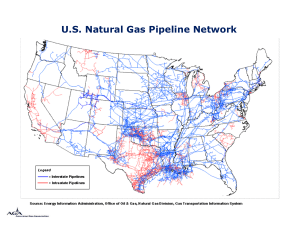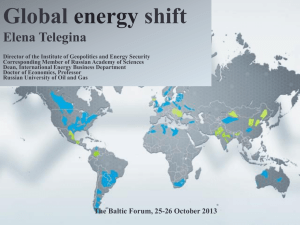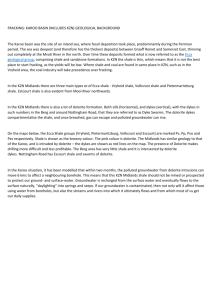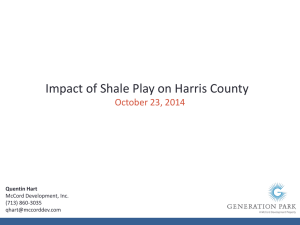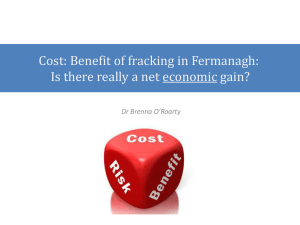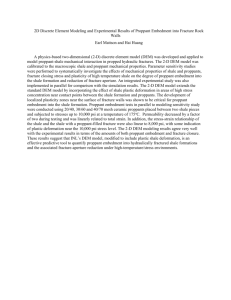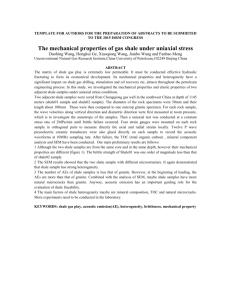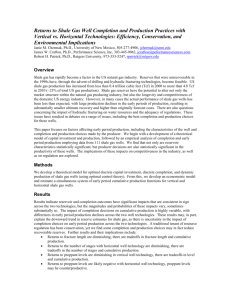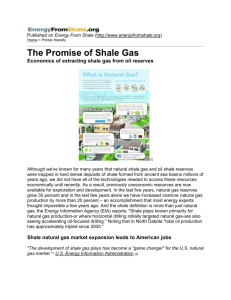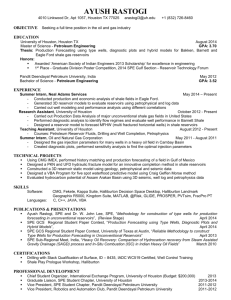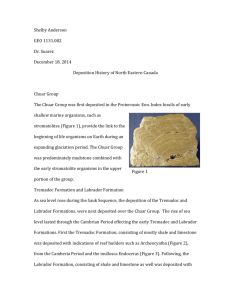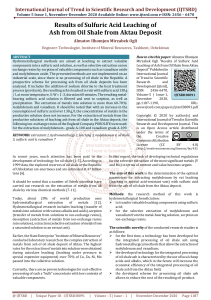Modeling the impacts of shale gas extraction on groundwater and
advertisement
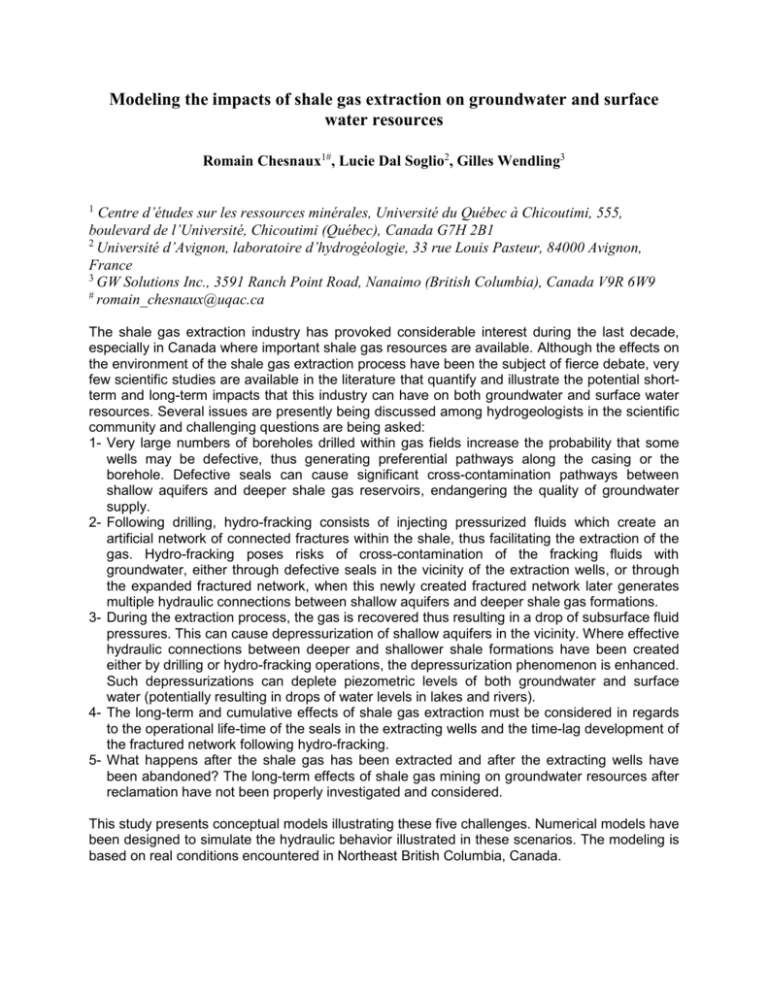
Modeling the impacts of shale gas extraction on groundwater and surface water resources Romain Chesnaux1#, Lucie Dal Soglio2, Gilles Wendling3 Centre d’études sur les ressources minérales, Université du Québec à Chicoutimi, 555, boulevard de l’Université, Chicoutimi (Québec), Canada G7H 2B1 2 Université d’Avignon, laboratoire d’hydrogéologie, 33 rue Louis Pasteur, 84000 Avignon, France 3 GW Solutions Inc., 3591 Ranch Point Road, Nanaimo (British Columbia), Canada V9R 6W9 # romain_chesnaux@uqac.ca 1 The shale gas extraction industry has provoked considerable interest during the last decade, especially in Canada where important shale gas resources are available. Although the effects on the environment of the shale gas extraction process have been the subject of fierce debate, very few scientific studies are available in the literature that quantify and illustrate the potential shortterm and long-term impacts that this industry can have on both groundwater and surface water resources. Several issues are presently being discussed among hydrogeologists in the scientific community and challenging questions are being asked: 1- Very large numbers of boreholes drilled within gas fields increase the probability that some wells may be defective, thus generating preferential pathways along the casing or the borehole. Defective seals can cause significant cross-contamination pathways between shallow aquifers and deeper shale gas reservoirs, endangering the quality of groundwater supply. 2- Following drilling, hydro-fracking consists of injecting pressurized fluids which create an artificial network of connected fractures within the shale, thus facilitating the extraction of the gas. Hydro-fracking poses risks of cross-contamination of the fracking fluids with groundwater, either through defective seals in the vicinity of the extraction wells, or through the expanded fractured network, when this newly created fractured network later generates multiple hydraulic connections between shallow aquifers and deeper shale gas formations. 3- During the extraction process, the gas is recovered thus resulting in a drop of subsurface fluid pressures. This can cause depressurization of shallow aquifers in the vicinity. Where effective hydraulic connections between deeper and shallower shale formations have been created either by drilling or hydro-fracking operations, the depressurization phenomenon is enhanced. Such depressurizations can deplete piezometric levels of both groundwater and surface water (potentially resulting in drops of water levels in lakes and rivers). 4- The long-term and cumulative effects of shale gas extraction must be considered in regards to the operational life-time of the seals in the extracting wells and the time-lag development of the fractured network following hydro-fracking. 5- What happens after the shale gas has been extracted and after the extracting wells have been abandoned? The long-term effects of shale gas mining on groundwater resources after reclamation have not been properly investigated and considered. This study presents conceptual models illustrating these five challenges. Numerical models have been designed to simulate the hydraulic behavior illustrated in these scenarios. The modeling is based on real conditions encountered in Northeast British Columbia, Canada.

